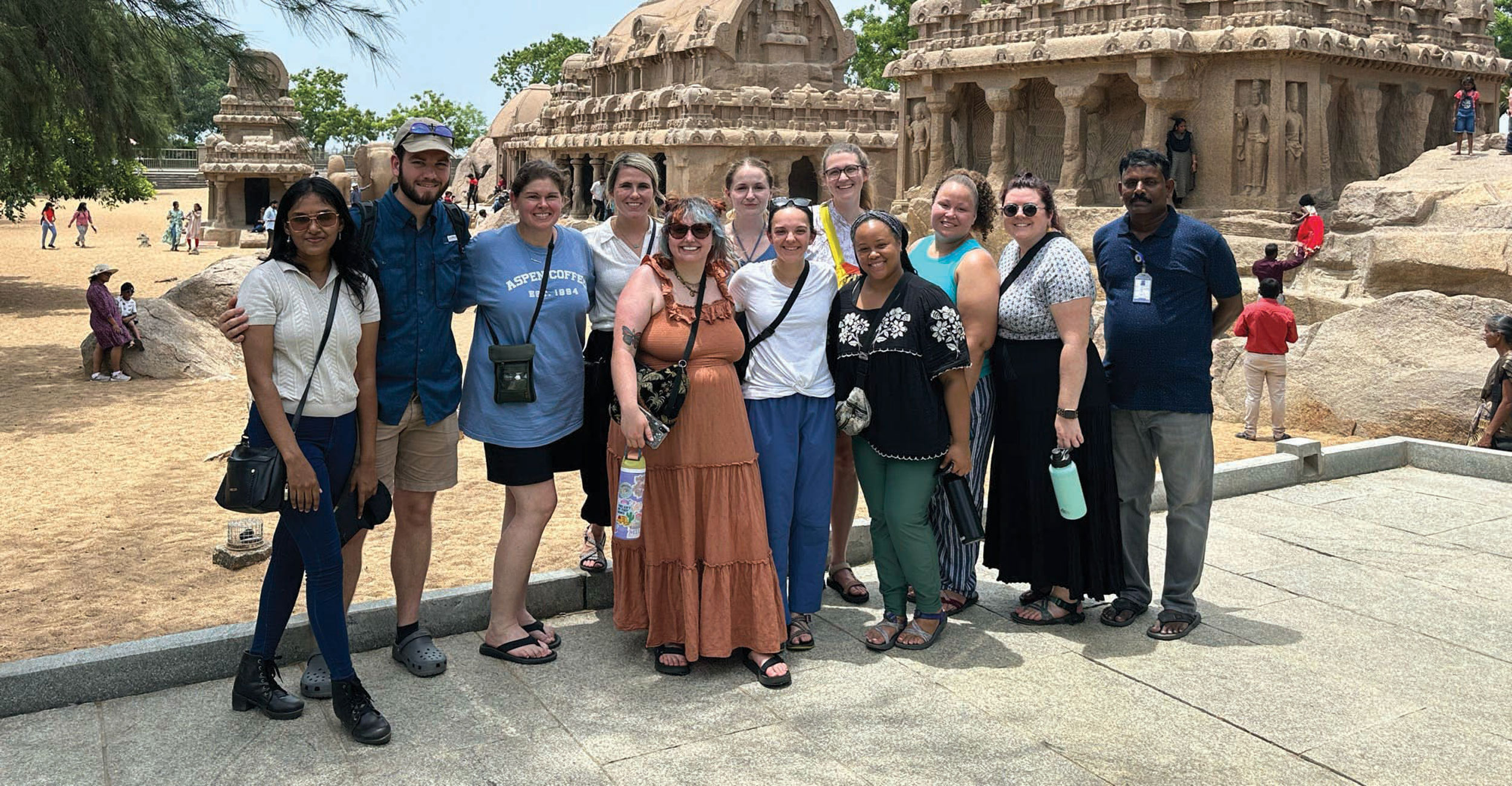
OSU veterinary students put skills to the test in India
Friday, January 19, 2024
Media Contact: Taylor Bacon | Public Relations and Marketing | 405-744-6728 | taylor.bacon@okstate.edu
This summer, Oklahoma State University College of Veterinary Medicine students got out of the classroom — and out of the country — by about 9,000 miles.
They journeyed to Chennai, India, for four weeks at the Tamil Nadu University of Veterinary and Animal Sciences as part of an exchange program.
CVM professors Dr. Lionel Dawson and Dr. Ashish Ranjan are TANUVAS graduates who helped initiate the relationship and offered connections for beginning the partnership. A visit from the Tamil Nadu minister for animal husbandry, a faculty member and the minister’s assistant helped move the idea forward with the government for India’s 10th largest state.
“By getting to see the different ways people do things to get similar positive outcomes in their education or with patients broadens everyone’s horizons.”
Dawson and Ranjan involved CVM Dean Carlos Risco and senior associate dean for research and graduate education Dr. Jerry Malaye in the push to begin the partnership and in 2018, a five-year agreement was signed. The partnership included faculty and student exchanges for educational and research purposes. Last year, the initial agreement ended, but Dr. Risco and Malayer traveled to India to sign a renewal for another five years.
In June, fourth-year OSU veterinary students traveled to Chennai, the capital of Tamil Nadu and home to 12 million people. On the trip, they learned a mixture of hands-on experiences and observation of veterinary techniques.
“The exchange made me appreciate the resources that allow us to practice the standard of medicine we can in the U.S.,” said Alli Garcia, fourth-year veterinary student.
There are many differences between how veterinarians practice medicine in the U.S. compared to those in India. This provided a great learning opportunity for OSU veterinary students.
“The most challenging part was transitioning from how we practice medicine here in the U.S., to how they practice medicine there,” said Braden Steidley, fourth-year veterinary student. “It is very different; especially in a teaching setting.”
One of the biggest benefits students may gain from the exchange is being exposed to a different culture, agricultural systems and different veterinary practice situations, Malayer said.
“By getting to see the different ways people do things to get similar positive outcomes in their education or with patients broadens everyone’s horizons,” Malayer said.
The TANUVAS exchange places students in an environment where they can tour facilities, see clinics, assist with cases and meet faculty in India.
“We had the opportunity to visit an elephant sanctuary, which is not something I would have ever experienced here,” said Brie Shillingford, fourth-year veterinary student.
The students spent time at the Mudumalai Wildlife Sanctuary where they saw various animals, some of which they also saw in the wild.
“We went on a safari in the jungle and saw wild elephants along with other wild animals,” Steidley said.
The educational aspect of the TANUVAS exchange was an important part of the students’ time in India.
“I learned that medications are not readily available to everyone in the world like they are here,” Shillingford said. “India doesn’t get pain or opioid medications like we do.”
The students shared some of their biggest takeaways were learning the clinical signs of distemper, the difference between theriogenology in cattle and water buffalos, animal diseases not in the U.S., the different techniques to anesthetize and capture elephants in the wild, and the cultural differences.
“I hope people can recognize how this sort of activity is an important part of education,” Malayer said. “It’s not just books and lectures, it’s experiences.”
Not only was the trip a learning experience, but it was also a chance to make lifelong memories.
“My most memorable experience in India was getting to palpate a water buffalo on our trip up the mountain to the sheep research center,” Garcia said. “The drive itself was also beautiful and terrifying at the same time!”
From elephants to sheep, the students spent considerable time with animals in India. The exchange provided students with unique veterinary experiences that enhanced their knowledge of medicine.
